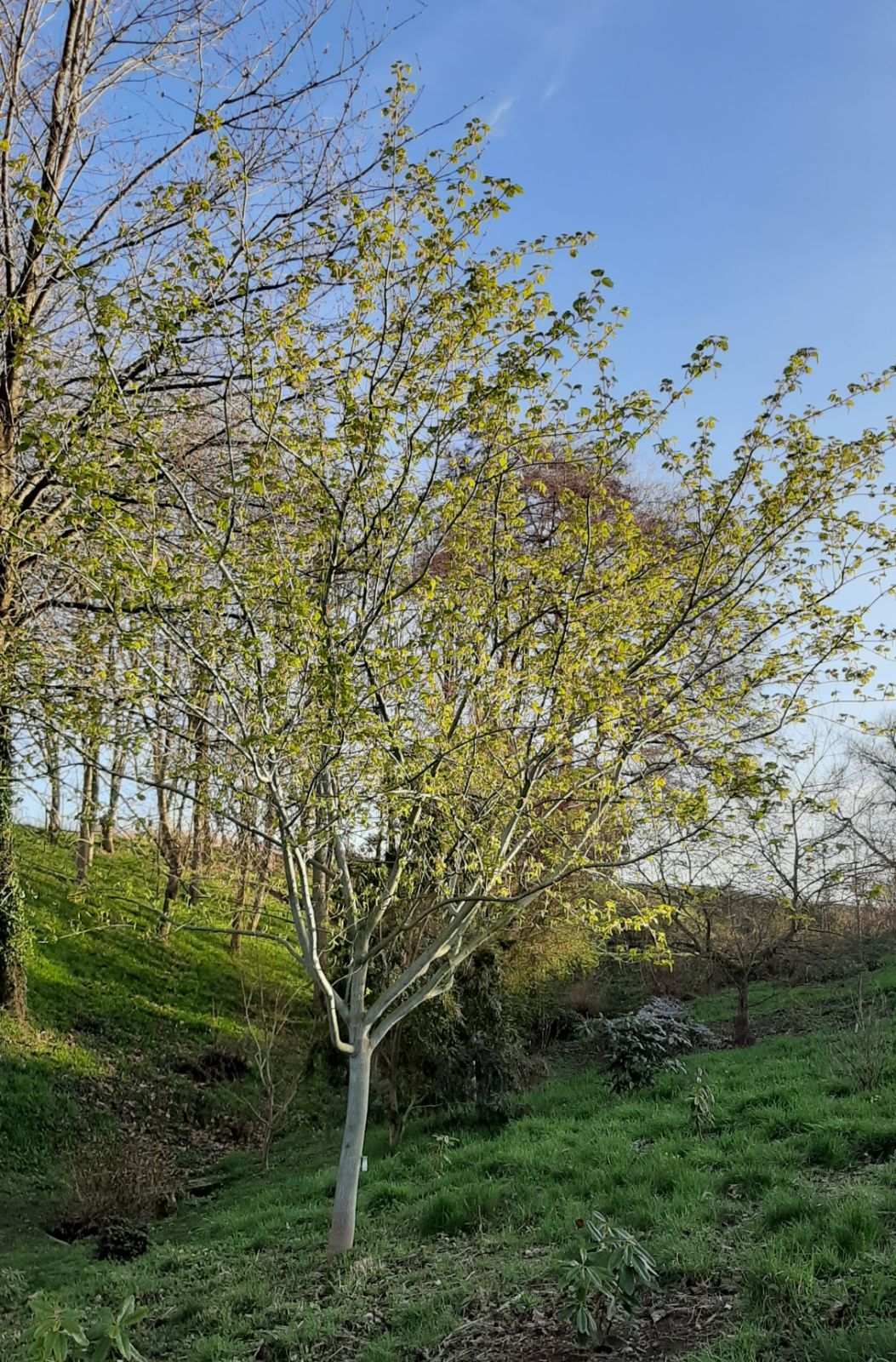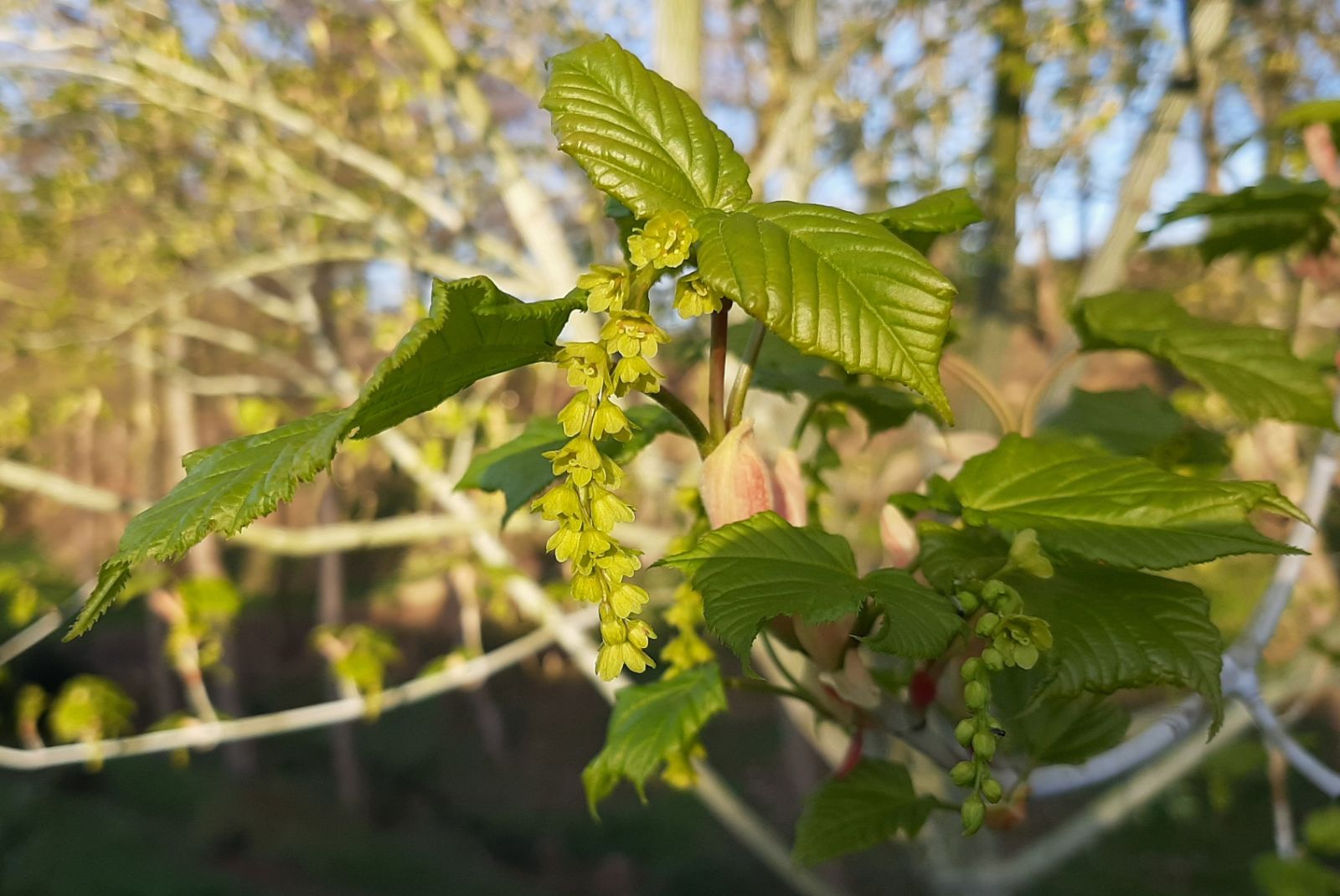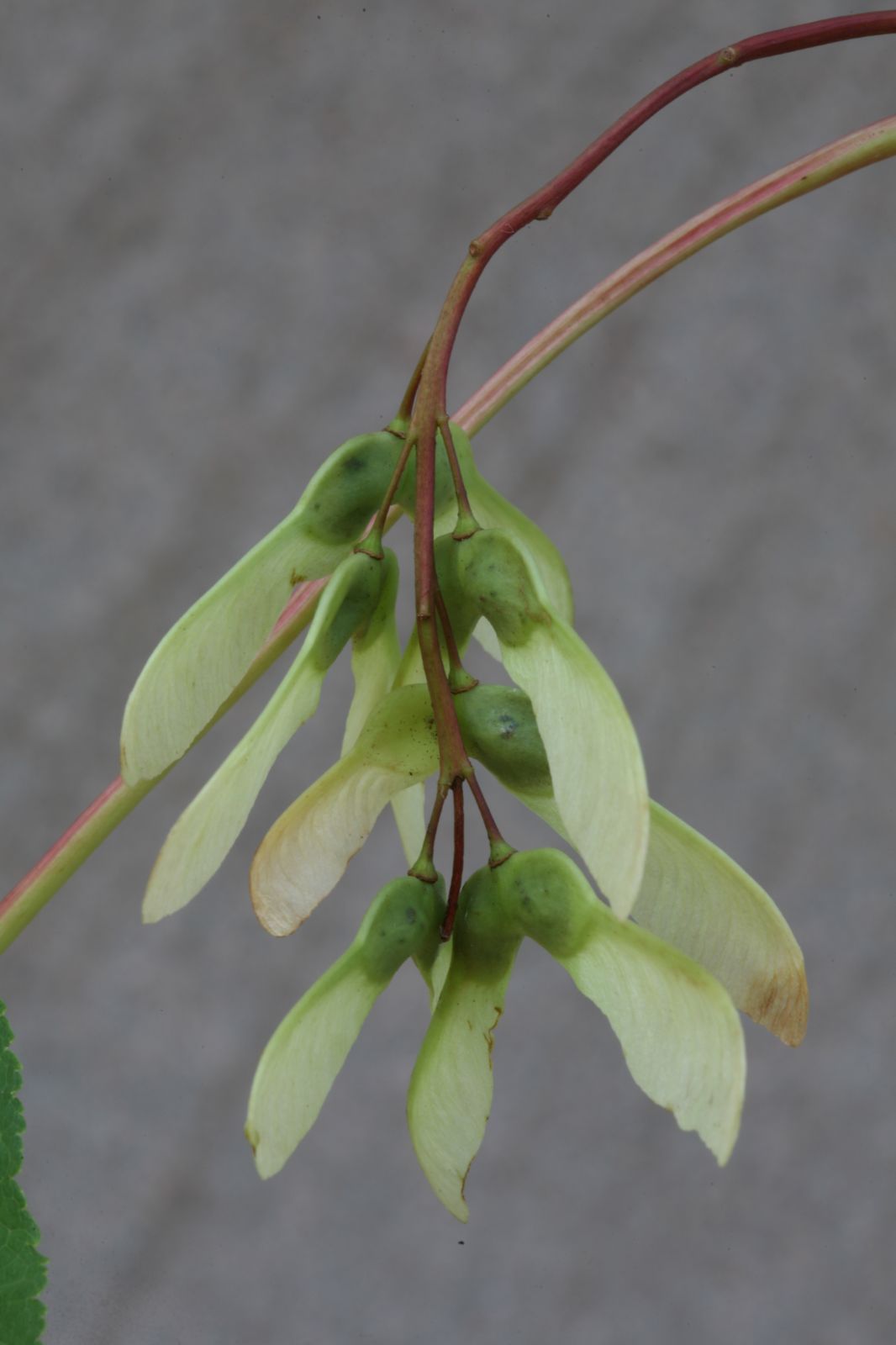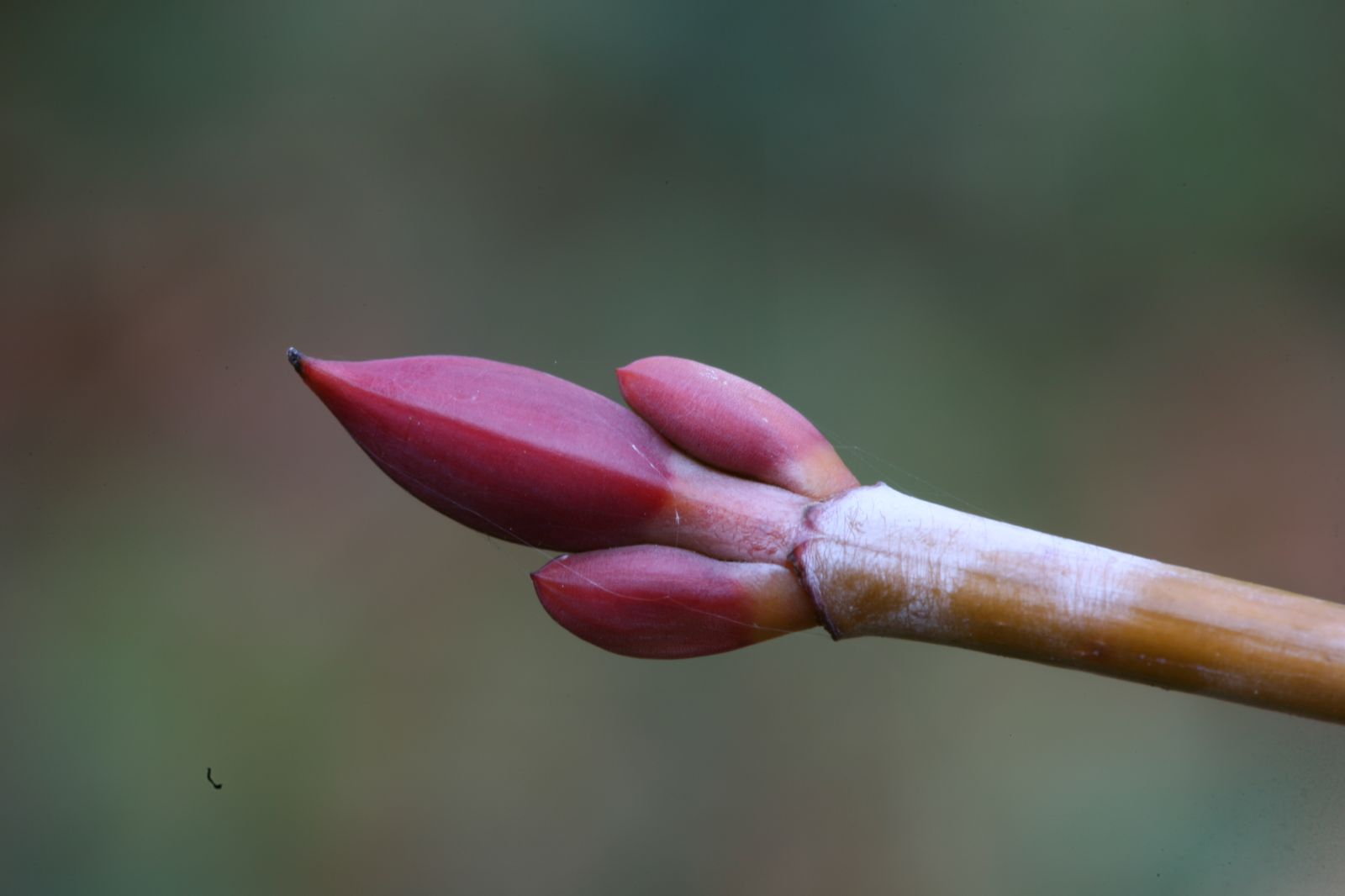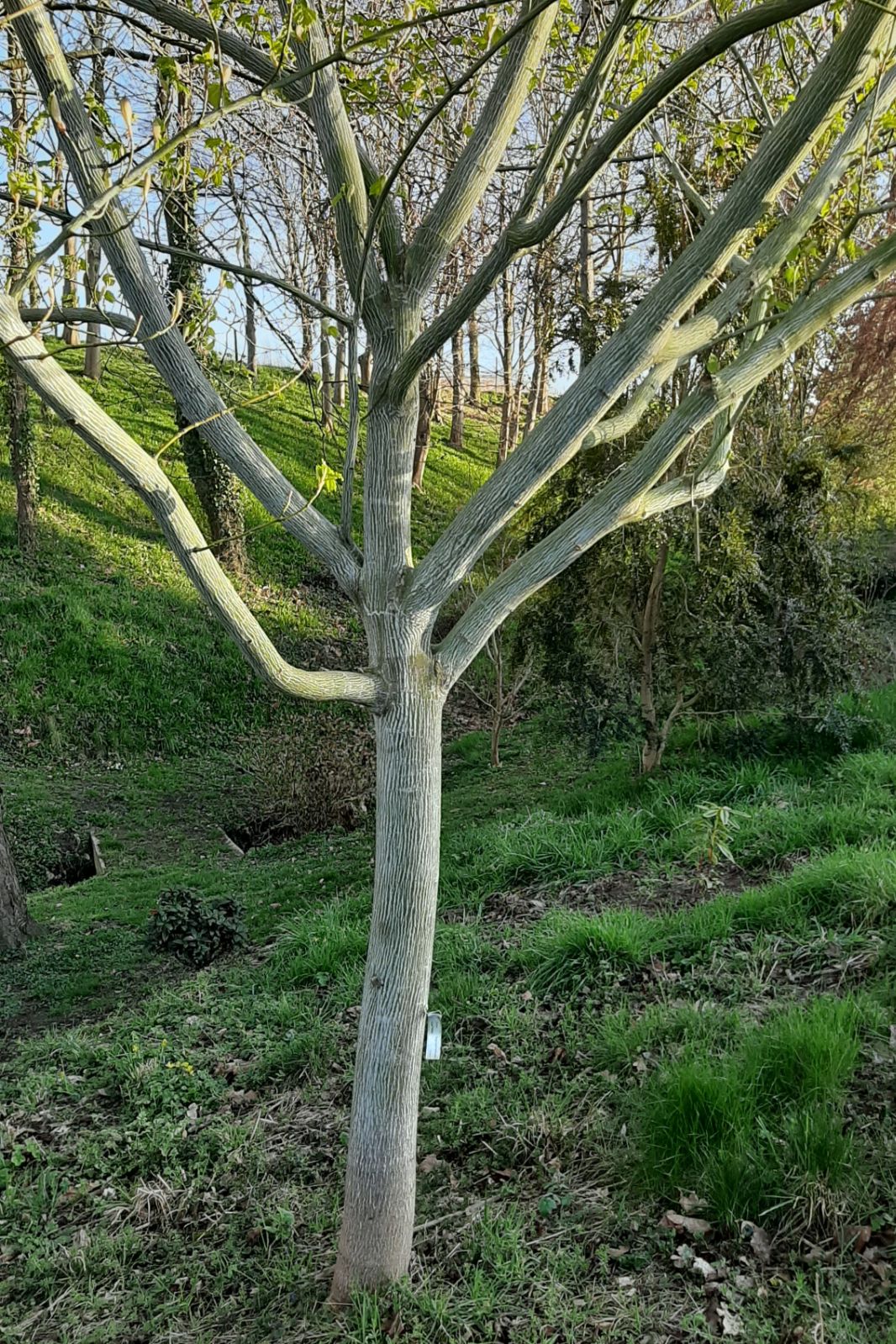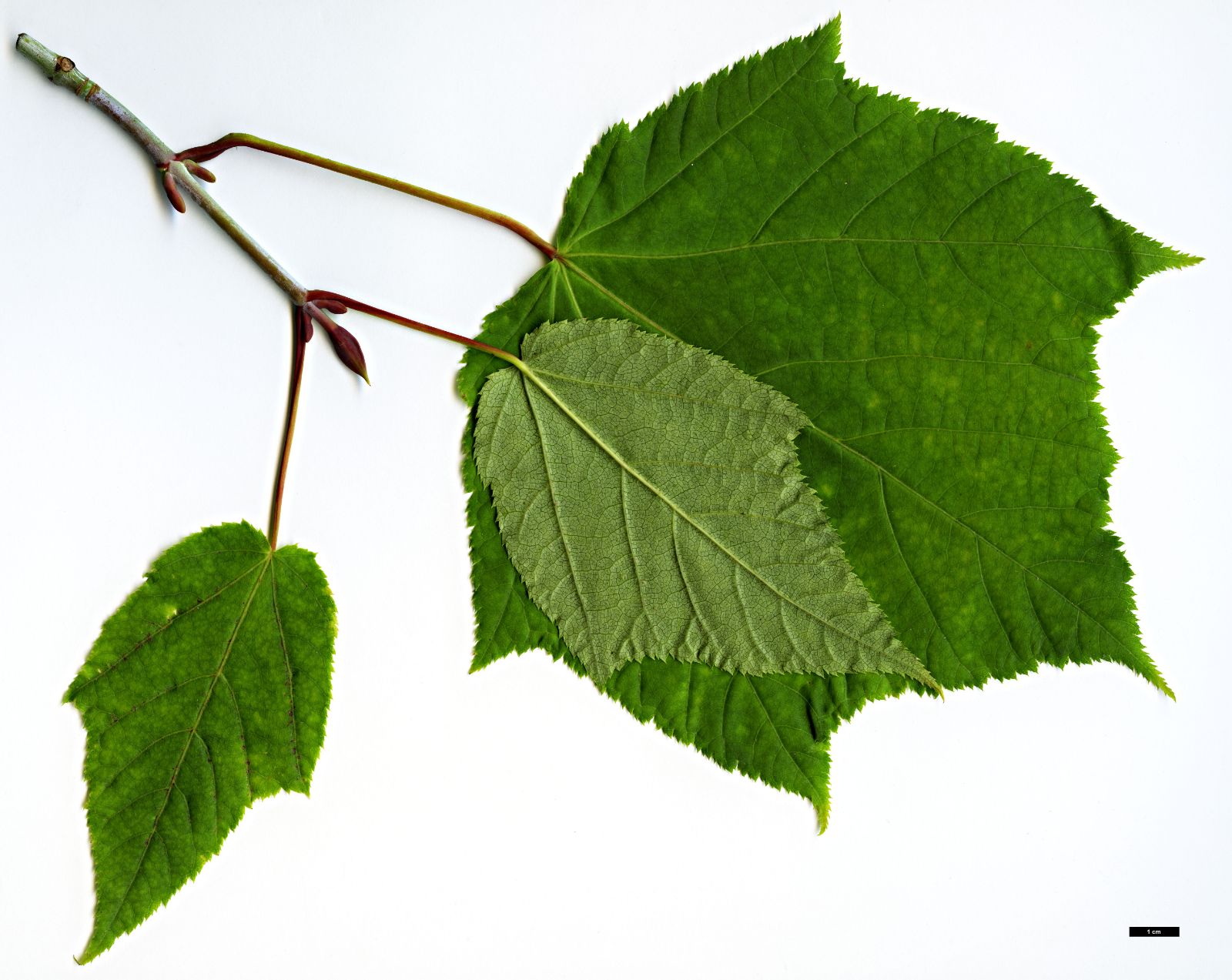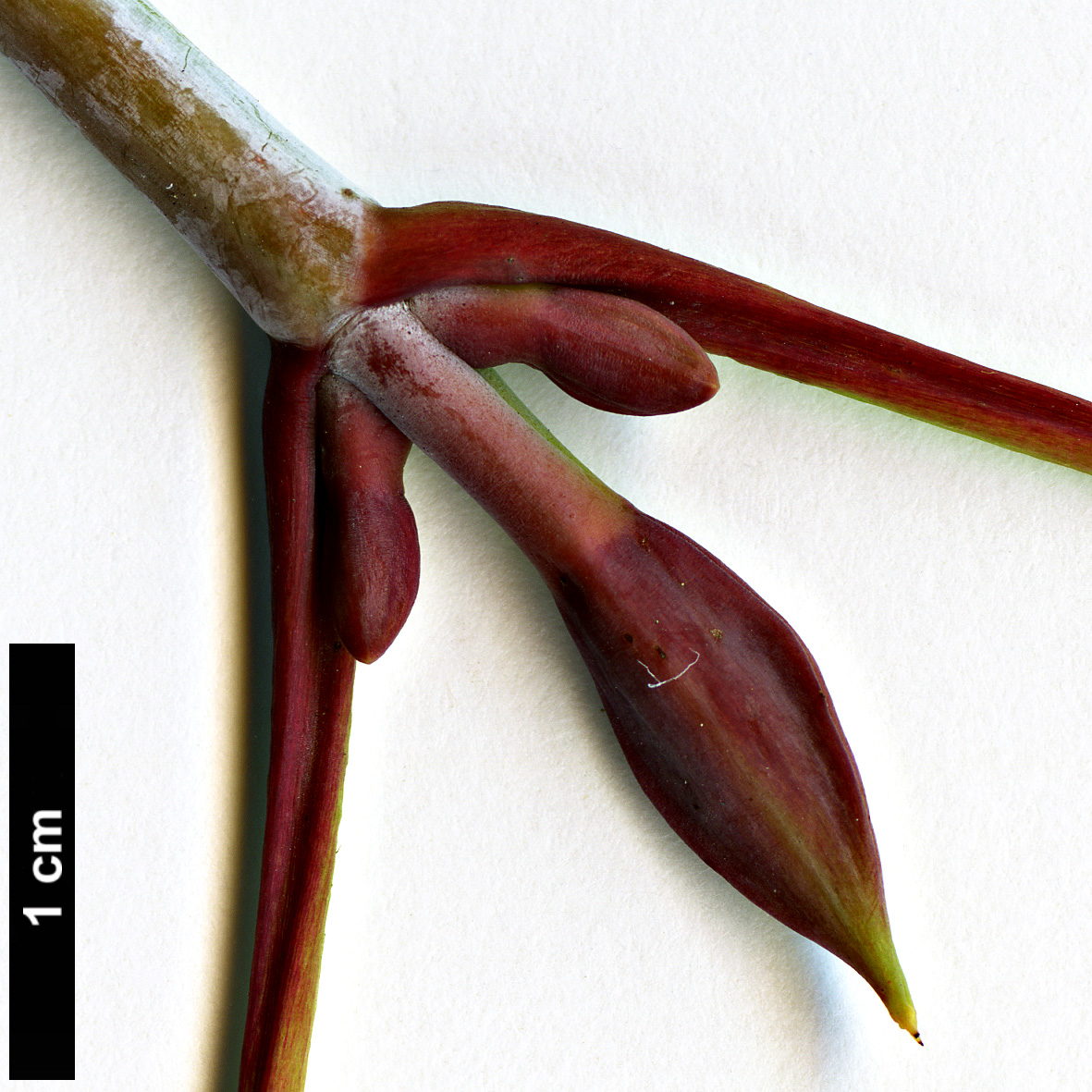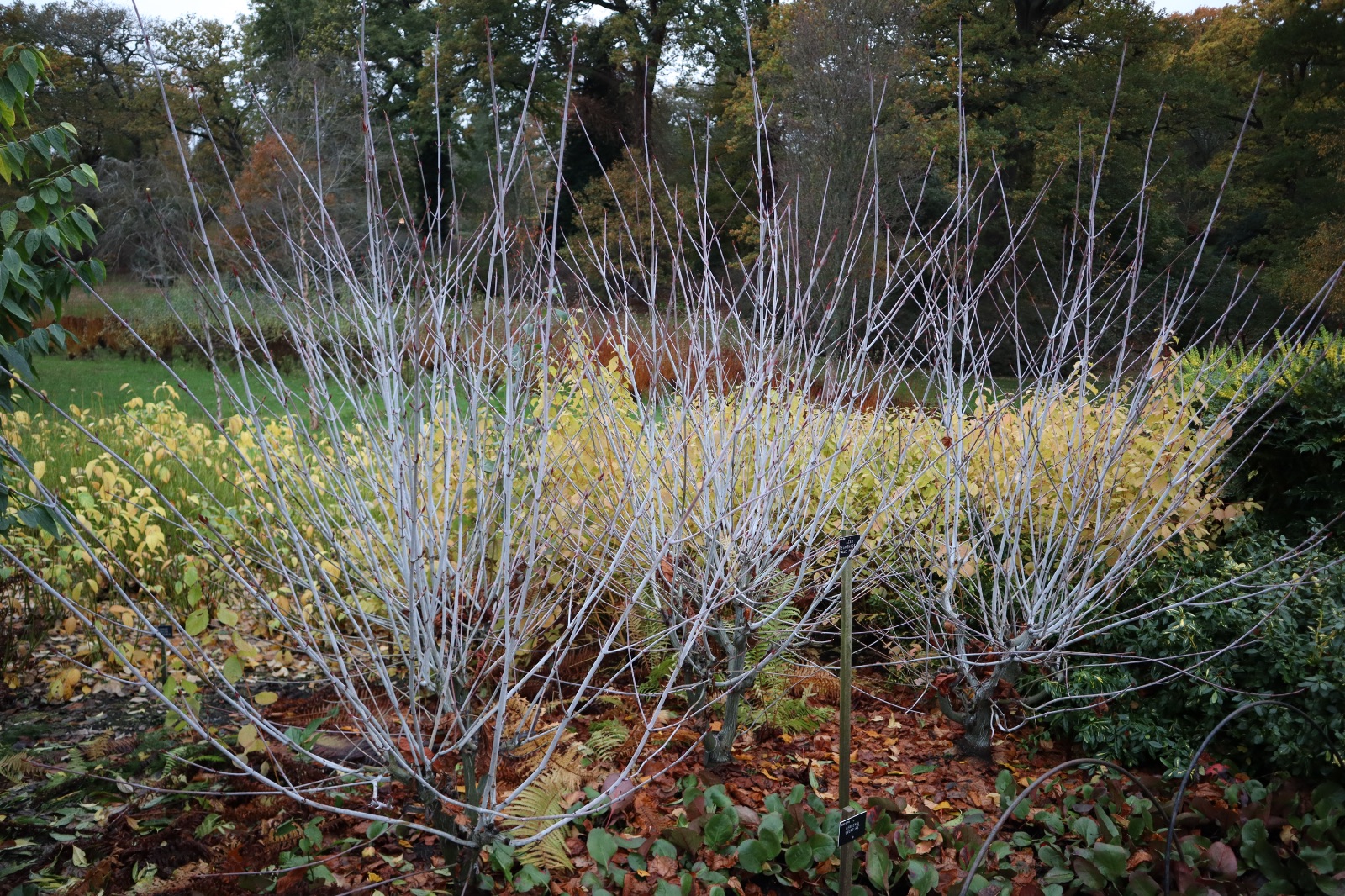Acer tegmentosum
Sponsor
Kindly sponsored by
Lawrence Banks
Credits
Dan Crowley (2019)
Recommended citation
Crowley, D. (2019), 'Acer tegmentosum' from the website Trees and Shrubs Online (treesandshrubsonline.
Genus
- Acer
- Sect. Macrantha
Common Names
- Manchurian maple
Synonyms
- Acer pensylvanicum var. tegmentosum (Maximowicz) Wesmael
Infraspecifics
Other taxa in genus
- Acer acuminatum
- Acer amplum
- Acer argutum
- Acer barbinerve
- Acer buergerianum
- Acer caesium
- Acer calcaratum
- Acer campbellii
- Acer campestre
- Acer 'Candy Stripe'
- Acer capillipes
- Acer cappadocicum
- Acer carpinifolium
- Acer 'Cascade'
- Acer caudatum
- Acer ceriferum
- Acer chapaense
- Acer chienii
- Acer circinatum
- Acer cissifolium
- Acer × conspicuum
- Acer cordatum
- Acer coriaceifolium
- Acer × coriaceum
- Acer crataegifolium
- Acer davidii
- Acer diabolicum
- Acer distylum
- Acer divergens
- Acer duplicatoserratum
- Acer elegantulum
- Acer erianthum
- Acer 'Esk Flamingo'
- Acer fargesii
- Acer fenzelianum
- Acer flabellatum
- Acer forrestii
- Acer franchetii
- Acer × freemanii
- Acer fulvescens
- Acer 'Gimborn'
- Acer ginnala
- Acer glabrum
- Acer 'Gold Coin'
- Acer granatense
- Acer grandidentatum
- Acer griseum
- Acer heldreichii
- Acer henryi
- Acer × hillieri
- Acer hookeri
- Acer hyrcanum
- Acer japonicum
- Acer kawakamii
- Acer komarovii
- Acer laevigatum
- Acer laurinum
- Acer laxiflorum
- Acer lobelii
- Acer longipes
- Acer macrophyllum
- Acer mandshuricum
- Acer maximowiczianum
- Acer maximowiczii
- Acer metcalfii
- Acer miaotaiense
- Acer micranthum
- Acer 'Mindavi'
- Acer 'Minorient'
- Acer miyabei
- Acer miyabei × campestre
- Acer monspessulanum
- Acer morifolium
- Acer 'Mozart'
- Acer oblongum
- Acer obtusifolium
- Acer okamotoanum
- Acer oliverianum
- Acer opalus
- Acer orientale
- Acer palmatum
- Acer papilio
- Acer pauciflorum
- Acer pectinatum
- Acer pensylvanicum
- Acer pentaphyllum
- Acer pentapotamicum
- Acer pictum
- Acer pilosum
- Acer pinnatinervium
- Acer platanoides
- Acer platanoides × amplum
- Acer platanoides × truncatum
- Acer × pseudoheldreichii
- Acer pseudoplatanus
- Acer pseudosieboldianum
- Acer pubinerve
- Acer pycnanthum
- Acer rubescens
- Acer rubrum
- Acer rufinerve
- Acer saccharinum
- Acer saccharum
- Acer sempervirens
- Acer 'Serpentine'
- Acer serrulatum
- Acer shenkanense
- Acer sieboldianum
- Acer sikkimense
- Acer 'Silver Cardinal'
- Acer 'Silver Ghost'
- Acer sinense
- Acer sinopurpurascens
- Acer spicatum
- Acer stachyophyllum
- Acer taronense
- Acer tataricum
- Acer tenellum
- Acer tetramerum
- Acer tibetense
- Acer tonkinense
- Acer triflorum
- Acer truncatum
- Acer tschonoskii
- Acer turkestanicum
- Acer tutcheri
- Acer ukurunduense
- Acer velutinum
- Acer wardii
- Acer 'White Tigress'
- Acer wilsonii
- Acer × zoeschense
A deciduous shrub or tree 10–15 m; single or multistemmed. Bark grey-green with white longitudinal stripes. Twigs glabrous, purple to greyish-green with glaucous-white bloom, at least at first. Buds stipitate, with two pairs of valvate scales. Leaves chartaceous, orbicular or hexagonal in outline, 9–17 × 7–17 cm, 5– to 5-lobed, occasionally with 2, small, basal lobes; upper surface dark green, lower surface pale green with or without slight yellowish pubescence in vein axils, margins double-serrulate, base subcordate or rounded, lobes ovate with an acuminate apex; petiole 3–8 cm long, green to red, slightly grooved; autumn colour, golden yellow. Inflorescence terminal, pendulous, racemose, 7–10 cm long, ~15 flowered. Flowers yellowish-green, 5-merous, usually andromonoecious; pedicels ~5 cm long, sepals oblong ~0.3 cm long and 0–15 cm wide, petals obovate and same length as sepals and ~0.2 cm wide, stamens 8, inserted outside the nectar disc. Samaras 1.1–1.3 cm long, yellowish-brown when mature, wings spreading obtusely to nearly horizontally. Flowering in March or later, fruiting in September. (Pojarkova 1974; van Gelderen et al. 1994; van Gelderen & van Gelderen 1999; Xu et al. 2008).
Distribution China Heilongjiang, Jilin, Liaoning North Korea Russia
Habitat Mixed and coniferous forests.
RHS Hardiness Rating H5
Conservation status Least concern (LC)
Described as a ‘choice maple’ by Mark Flanagan (Flanagan & Kirkham 2005, p.164), Acer tegmentosum is certainly one of the finest in the section for its bark. It is also one of the lesser cultivated snakebarks, though has become more frequent in recent years. Together with A. pensylvanicum it is one of, if not the, most cold-hardy members of the section, though being early to flush it is susceptible to late spring frosts. Comparisons with A. pensylvanicum don’t end there, as it is very much the Asian counterpart of that species, an understory component of the coniferous and mixed forests of its native range of north east China, the Korean peninsula and eastern Russia (Chen et al. 2018).
Both these species have comparatively large leaves for the section, though they can be distinguished from one another by the basal lobes, which are often absent altogether in A. pensylvanicum, and generally smaller and less spreading in A. tegmentosum. More significantly though, the bloomed shoots of A. tegmentosum, covered in a thick waxy layer, are distinctive, alluded to in its specific epithet, which roughly translates as ‘covered’. Horticulturally, A. pensylvanicum is inferior to A. tegmentosum, requiring more shade and being a weaker grower generally. The blooming of A. tegmentosum also renders it more tolerant of sun (Justice, in press). Mature specimens are typically vase shaped, and with their chalky-white bark particularly prominent, they make fine features in a winter garden, but according to Lawrence Banks (pers. comm. 2019) they can be somewhat lanky during their ‘teenage years’.
According to Nicholson (1881) it was cultivated by Lavallée at Segrez in France in the 1870s (Bean 1976a), arriving later to North America with Rehder (1940) giving an introduction date of 1892. Like other members of the section it is not long lived and it is largely represented by younger trees in collections. A tree in Ray Wood at Castle Howard, North Yorkshire, planted in 1979, held the title of UK and Ireland champion for the species, at 11 m tall, though this succumbed to honey fungus and was blown over in 2019 (The Tree Register 2019). Contenders to take over that mantle, though measured over a decade ago, include a tree 9.5 m tall at the National Botanic Gardens, Glasnevin, Ireland, and trees of 9 m at The Manor, Walton-in-Gordano, Somerset, and at Wisley (The Tree Register 2019). Documented wild origin material is scarce in the United Kingdom. At Kew there is a single tree of ESUS 67, collected by Mark Flanagan and Tony Kirkham in 1994 on Kew’s expedition to the Russian Far East (Flanagan & Kirkham 2005). A plant of Chinese origin grows at Dawyck in Scotland, from material collected in Jilin Province in 1994 by a team from the Helsinki Botanic Garden (Royal Botanic Garden Edinburgh 2018). Plants from the same region are represented at the The Morris Arboretum, Pennsylvania and the Arnold Arboretum, Boston, collected on the 1997 NACPEC Expedition to Changbai Shan (NACPEC 97–16). Specimens of Korean origin are also represented in these collections.
A more recent introduction to the United Kingdom, from Mt. Pidan in Russia’s Schotosky District, was collected on a joint expedition by the Royal Botanic Garden Edinburgh and the Howick Arboretum in 2015, under the code EHER 49, although germination of this material in Edinburgh was poor (T. Christian, pers. comm. 2020). The field notes say that A. tegmentosum was common in open woodlands on sunny, south facing slopes and associated here with ‘Pinus koraiensis, Abies nephrolepis, Populus maximowicziana, Betula dahurica and Tilia amurensis’ (BG-BASE data 2020).
'Joe Witt'
RHS Hardiness Rating: H5
Acer tegmentosum ‘Joe Witt’ was named for Joseph A. Witt, former curator of the Washington Park Arboretum, Seattle, by Dan Hinkley, selected from one of two specimens growing at the arboretum in the 1980s. Hinkley observed it as an outstanding specimen in terms of its bark characters and superior to any specimen he saw on a subsequent trip to the wilds of Korea (D. Hinkley, pers. comms. 2019). Its ‘whitest of white stems’ (D. Hinkley in Jones 2007) and leaves that turn butter-yellow distinguish this selection.
The plant at the Washington Park Arboretum that came to be ‘Joe Witt’ was ‘noted as an excellent grower and in very good condition in 2008’, though a deterioration in its health was recorded in 2010, with leaf necrosis and bleeding cankers observed. It consequently died and was removed in November 2014, in spite of efforts to prolong its life (R. Larson, pers. comms. 2019). The original plant can be traced as far back as Moscow, from where material was sent to the Arnold Arboretum, Boston, in 1925. Scions from a resulting plant at the Arnold Arboretum were then sent to the Washington Park Arboretum in 1949, the resulting specimens planted in 1953, later propagated again, finally giving rise to the two plants from which Dan Hinkley made his selection (Jones 2007). The plant that became ‘Joe Witt’ was planted as a tree of just over 4 metres tall in 1969 (R. Larson, pers. comms. 2019).
The selection was offered by Heronswood Nursery, from plants grown from cuttings, soon after it was named and a specimen there is forming a spectacular tree with stunning autumn colour as well as the extraordinary bark for which it is most often grown (D. Hinkley, pers. comms. 2019). It is now widely grown in the Pacific Northwest and further afield, and the original plant at the Washington Park Arboretum is succeeded by several specimens grown from cuttings from the original.
‘Joe Witt’ remains far more frequent in North America than in Europe, although specimens have been added to the collections of Arboretum Wespelaar, Belgium, the Von Gimborn Arboretum, the Netherlands, and The Yorkshire Arboretum, in recent years.
'Valley Phantom'
RHS Hardiness Rating: H5
Another selection named for its bark characters, with prominently bloomed, almost white stems. It was named by Mark Flanagan from a plant growing in the Valley Gardens, Windsor Great Park, now no longer present (Edwards & Marshall 2019). Specimens in the adjacent Savill Garden are grown very effectively as coppiced plants, cut nearly to ground level every one or two years, depending on growth, then producing long, exaggeratedly white-bloomed shoots in the spring (J. Anderson, pers. comms. 2019). A young plant at Kew Gardens is growing happily as a standard on a single stem, in an open position in full sun.

